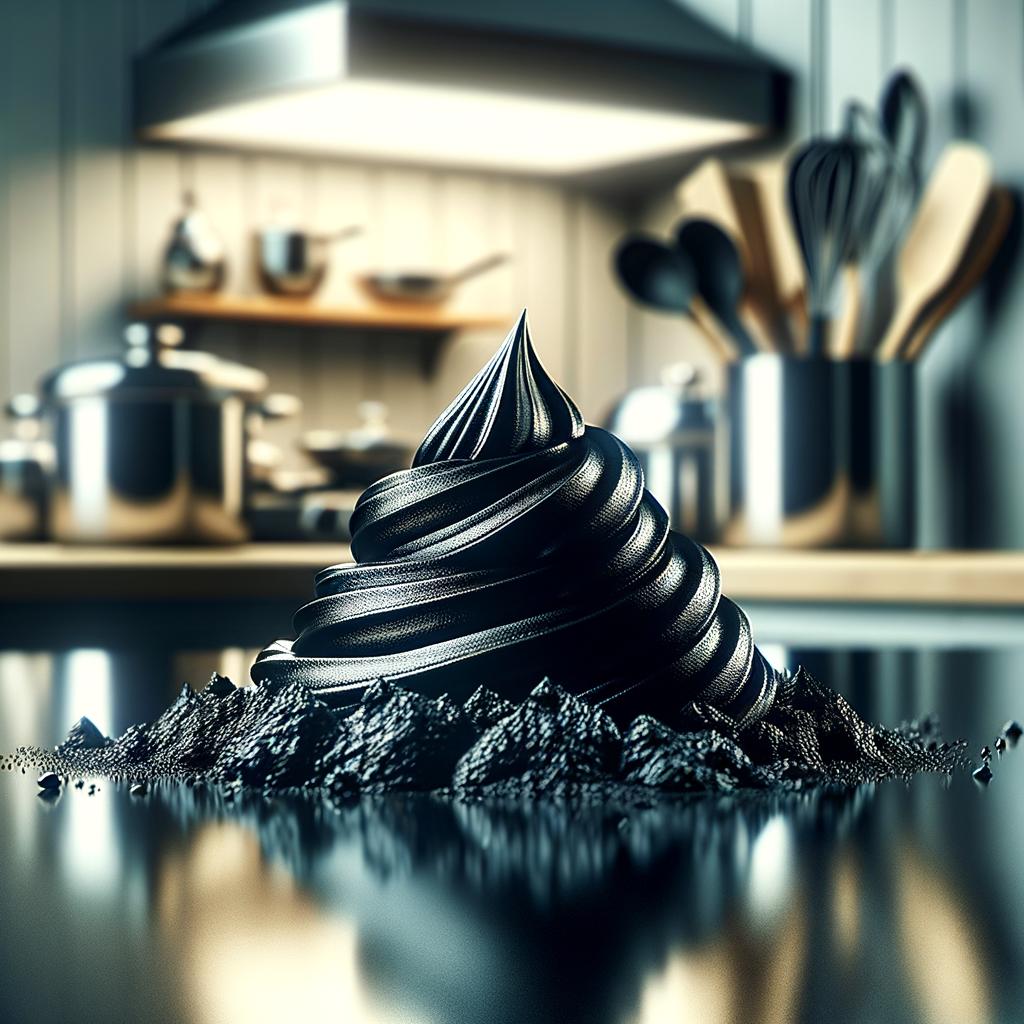Black Icing

Description Black icing, a delightful culinary paradox, is a unique and visually striking ingredient that transforms any dessert into a work of art. It is an exquisite blend of deep, dark hues that mirror the night sky, making it a standout in the world of confectionery. The texture of black icing is smooth and glossy, akin to satin, and it glides effortlessly onto the surface of cakes and cookies. Its flavor profile is intriguingly complex, with its sweetness often underscored by a hint of bitter cocoa or licorice, depending on the recipe used to achieve its dramatic color. The unique characteristic of black icing is its ability to provide a stunning contrast to other colors on a dessert, making it a favorite choice for creating visually striking designs.
Primary Uses Black icing is primarily used in baking and dessert decoration. It's a key component in creating themed cakes, cookies, and pastries, especially for Halloween, Gothic-inspired events, and milestone celebrations like birthdays and anniversaries. It's also used to outline and add details to colorful icing designs. Beyond its culinary uses, black icing has also found its place in creative arts, used in edible crafts and food photography to create dramatic and aesthetically pleasing images.
History The history of black icing is as rich and deep as its color. It's believed to have originated in Europe during the Middle Ages, where it was used to decorate desserts for royal banquets and celebrations. The dark color was achieved using burnt sugar or natural food dyes derived from plants and berries. Over time, with the advent of artificial food coloring, creating black icing became easier and more accessible. There's a romantic notion that black icing, with its mysterious and dramatic appearance, was often used to signify important and solemn occasions. Today, its use has evolved to become a trendy and creative way to add a touch of sophistication and intrigue to any dessert.
Nutritional Information The nutritional value of black icing largely depends on the ingredients used to make it. Typically, it contains sugar, water, and food coloring, making it high in carbohydrates. Some recipes may use dark cocoa powder, which adds a small amount of fiber, iron, and antioxidants. Compared to other icings, black icing might be slightly higher in calories due to the additional ingredients used for coloring. However, as with all sweet treats, it's best enjoyed in moderation. The real magic of black icing lies not in its nutritional profile, but in its ability to transform the ordinary into the extraordinary, painting a delicious canvas of culinary delight.

